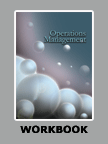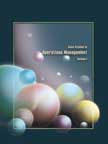H&M's Supply Chain Management Practices
|
|
ICMR HOME | Case Studies Collection
Case Details:
Case Code : OPER066
Case Length : 18 Pages
Period : 1997-2007
Organization : Hennes & Mauritz AB
Pub Date : 2008
Teaching Note :Not Available
Countries : Sweden
Industry : Apparel Retailing
To download H&M's Supply Chain Management Practices case study
(Case Code: OPER066) click on the button below, and select the case from the list of available cases:

Price:
For delivery in electronic format: Rs. 400;
For delivery through courier (within India): Rs. 400 +Shipping & Handling Charges extra
» Operations Case Studies
» Operations Short Case Studies
» View Detailed Pricing Info
» How To Order This Case
» Business Case Studies
» Case Studies by Area
» Case Studies by Industry
» Case Studies by Company 
Please note:
This case study was compiled from published sources, and is intended to be used as a basis for class discussion. It is not intended to illustrate either effective or ineffective handling of a management situation. Nor is it a primary information source.
Chat with us

Please leave your feedback

|
|




<< Previous
Excerpts
Background Note
|
H&M was founded by Erling Persson (Persson), a salesman from Västerås , Sweden.
In 1947, on a visit to the US, Persson was attracted by the concept of clothes
stores selling stylish garments at low prices. Following a similar concept, he
opened a store selling clothes for women in Västerås in 1947, and named the
store 'Hennes' (hers in Swedish). The low prices immediately attracted
customers. The stores were expanded during the 1950s and the 1960s. Persson was
confident that the concept would work as well in other countries, and in 1964,
the company ventured overseas by opening a store in Norway. This was followed by
a store in Denmark in 1967...
|

|
Idea Generation and Design
Initially, H&M sourced the products mostly from its agents in Asian
countries and sold them through its stores. In the late 1980s, after Bosch
joined the company, H&M began building a design team to take to the stores
the products that customers were demanding...
|
|
Production
Initially, all the production activities of H&M took place in Sweden. In the
1960s, production was carried out in other Scandinavian countries and in the
UK. In the late 1960s, some of the production activities were shifted to
southern European countries like Italy and Portugal. By the early 1970s, H&M
was also producing in Hungary, Poland, and erstwhile Yugoslavia. In 1978,
H&M ventured into the Far Eastern countries with a production office in Hong
Kong. As of 2000, H&M had 21 production offices, of which 10 were in Europe,
10 in the Far East, and one in Africa... |
Excerpts Contd...>>
|
|










